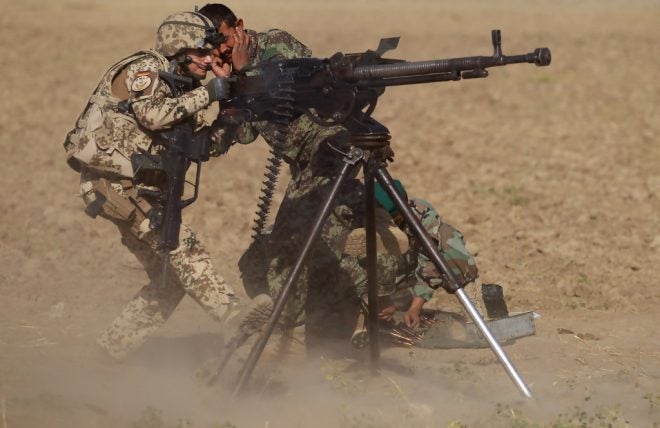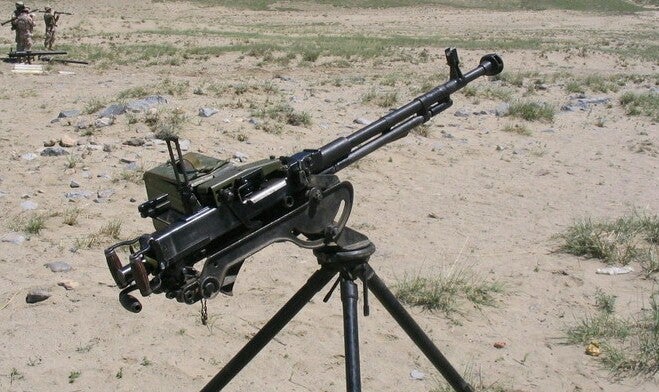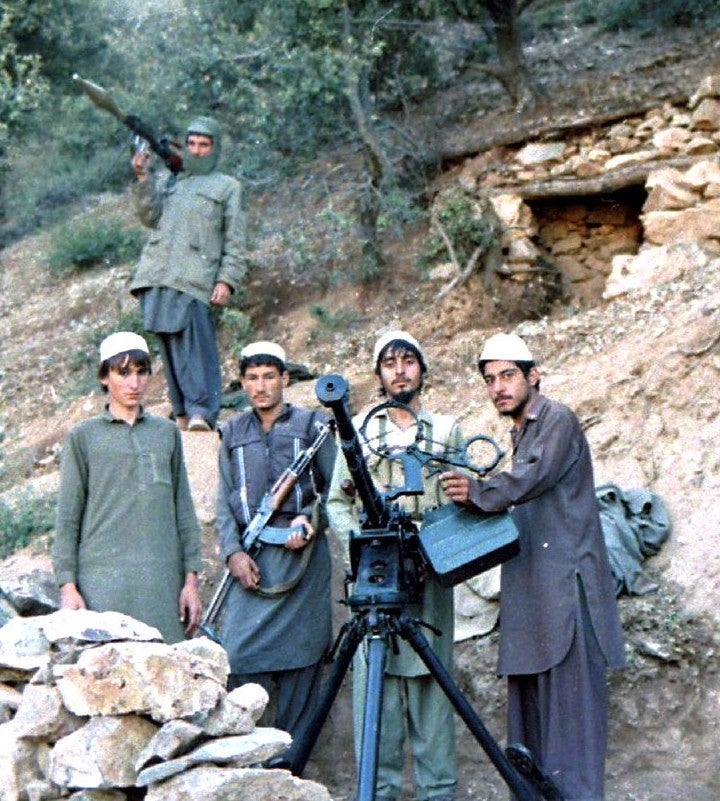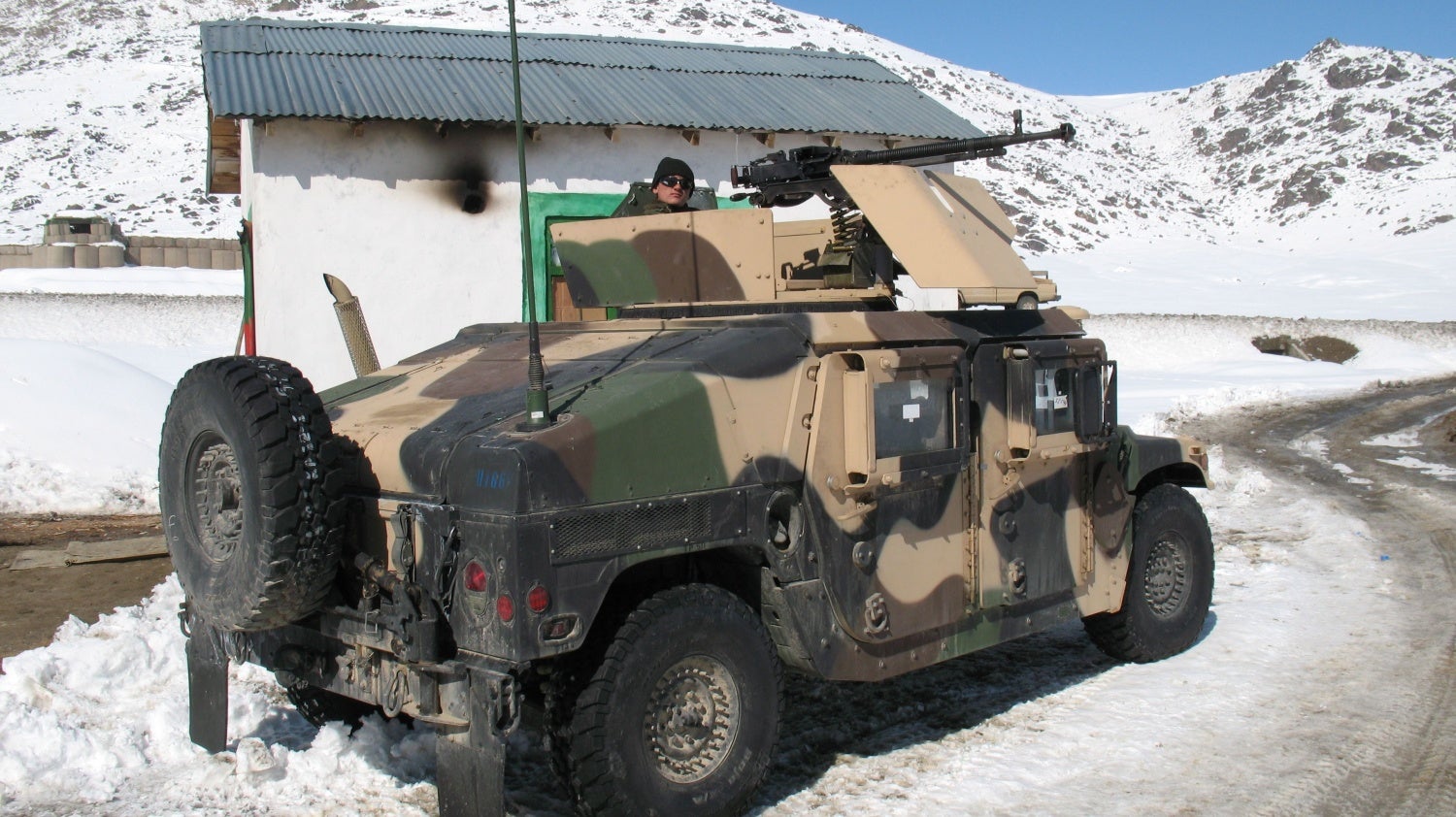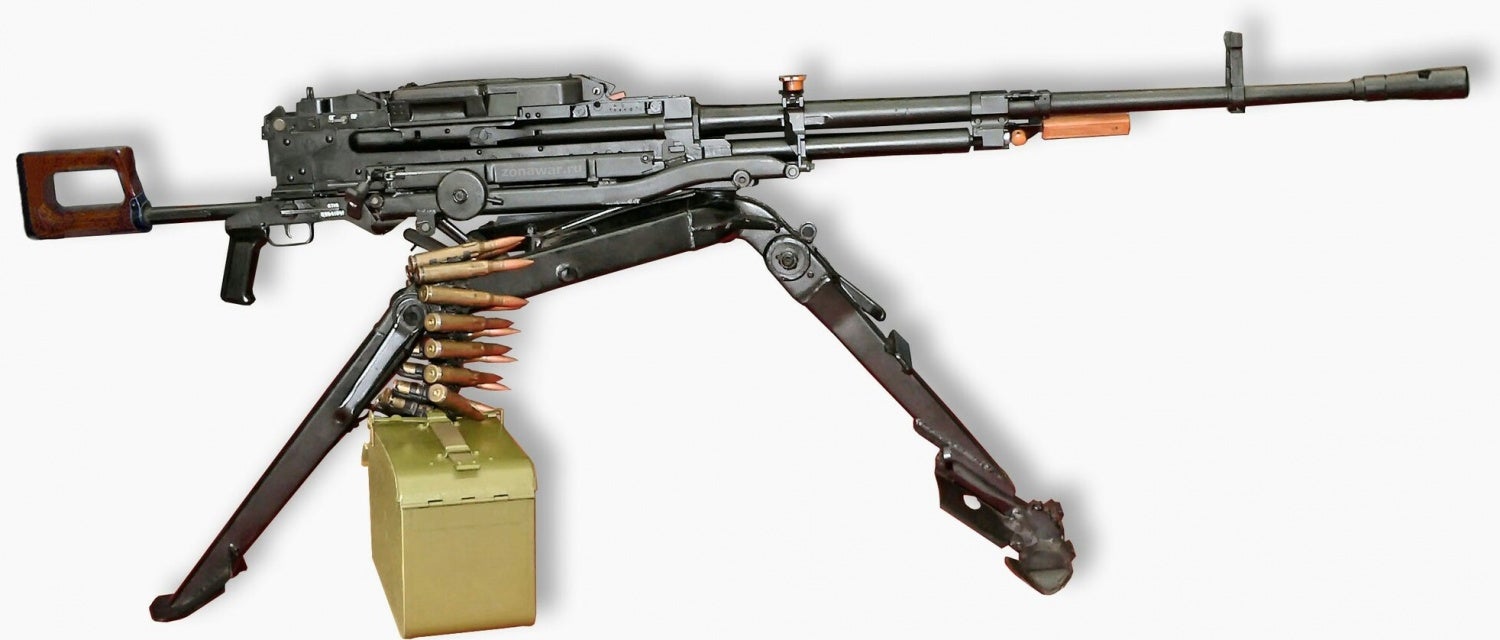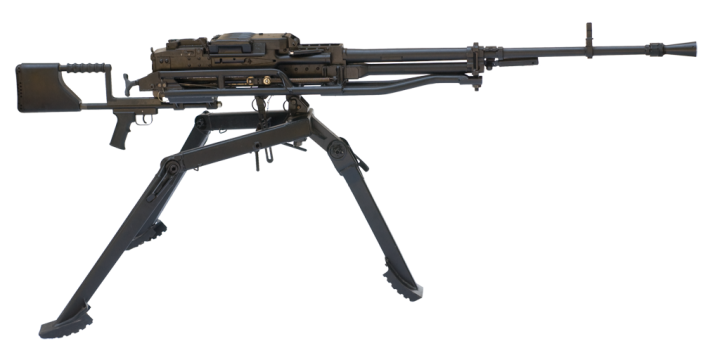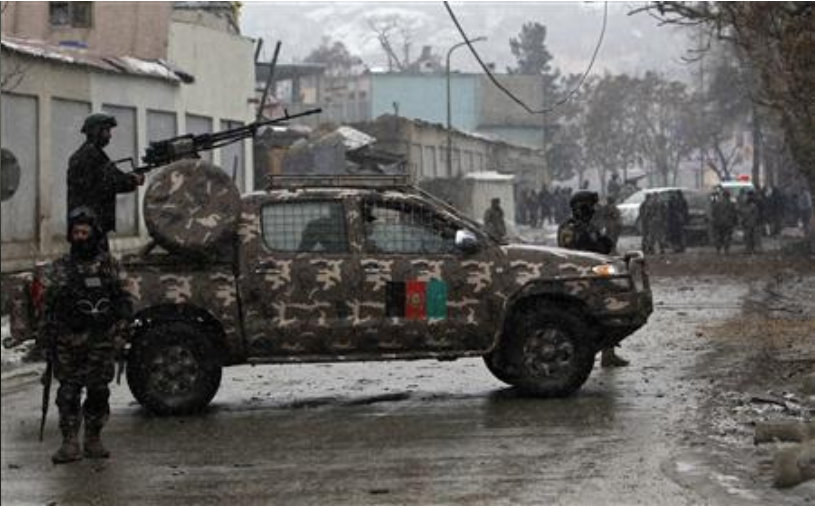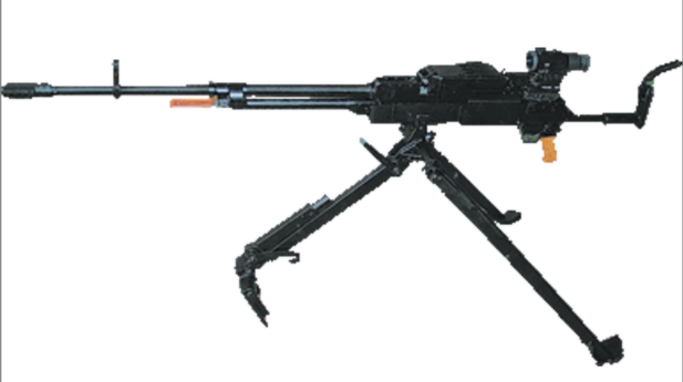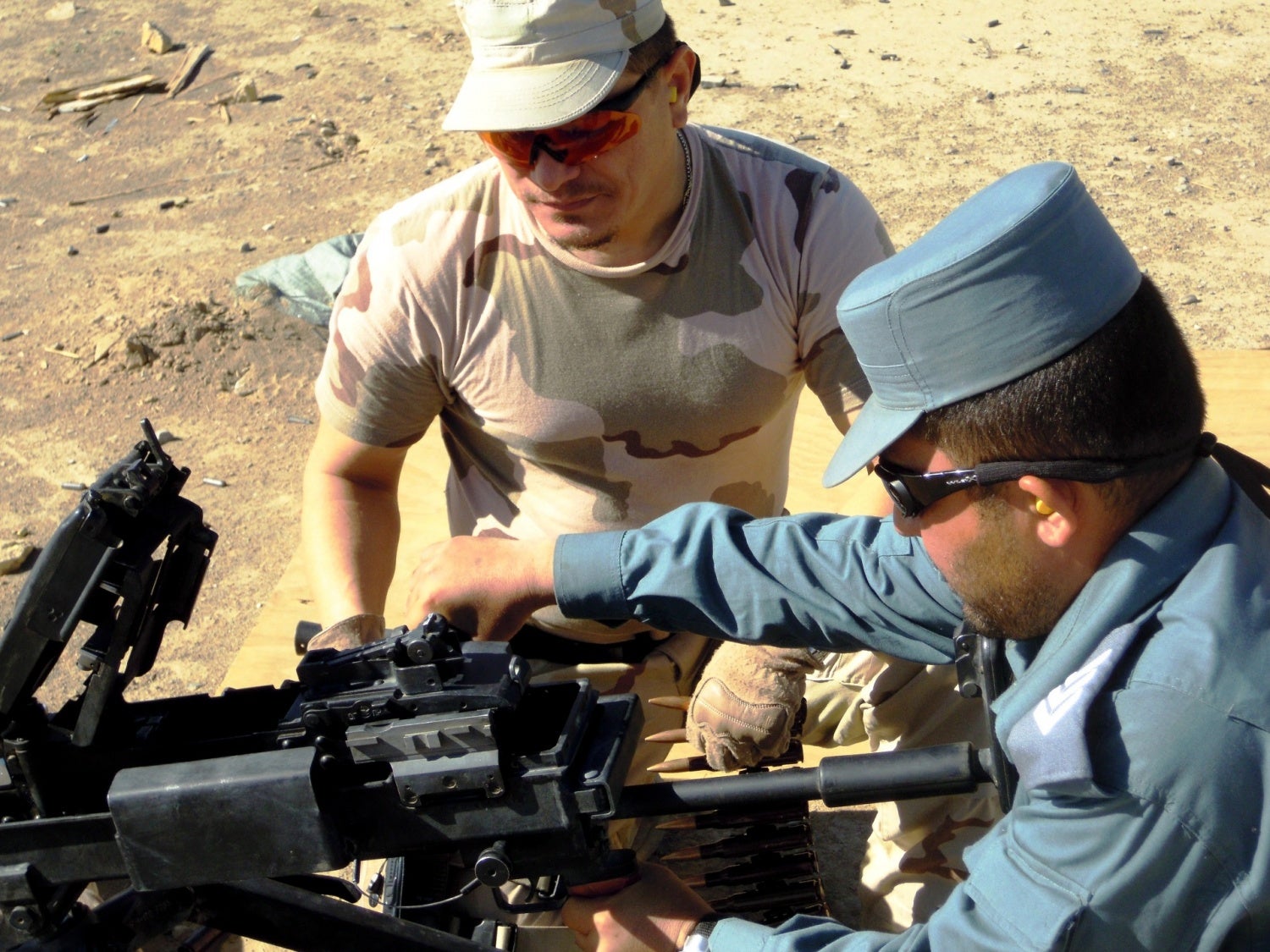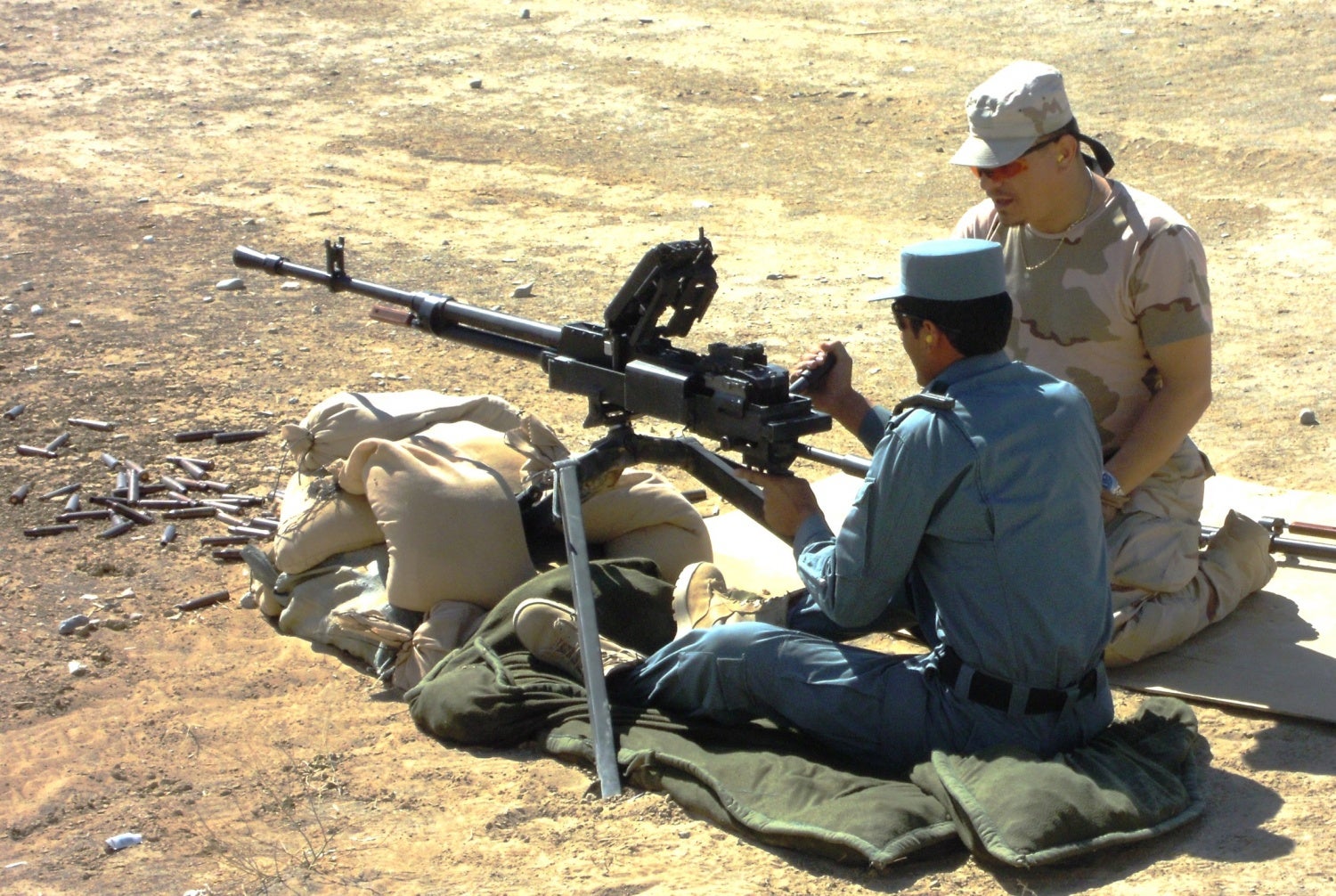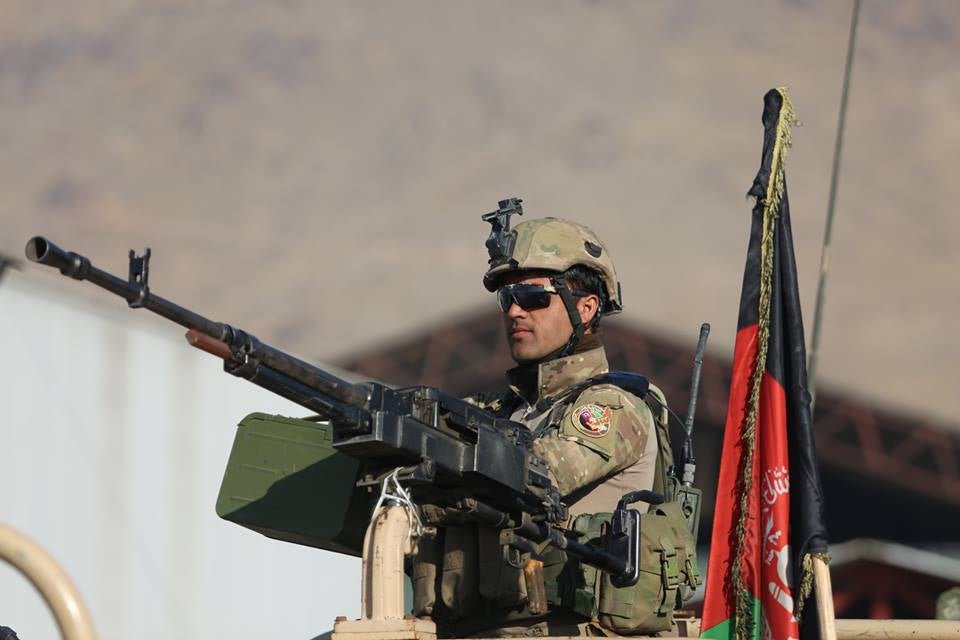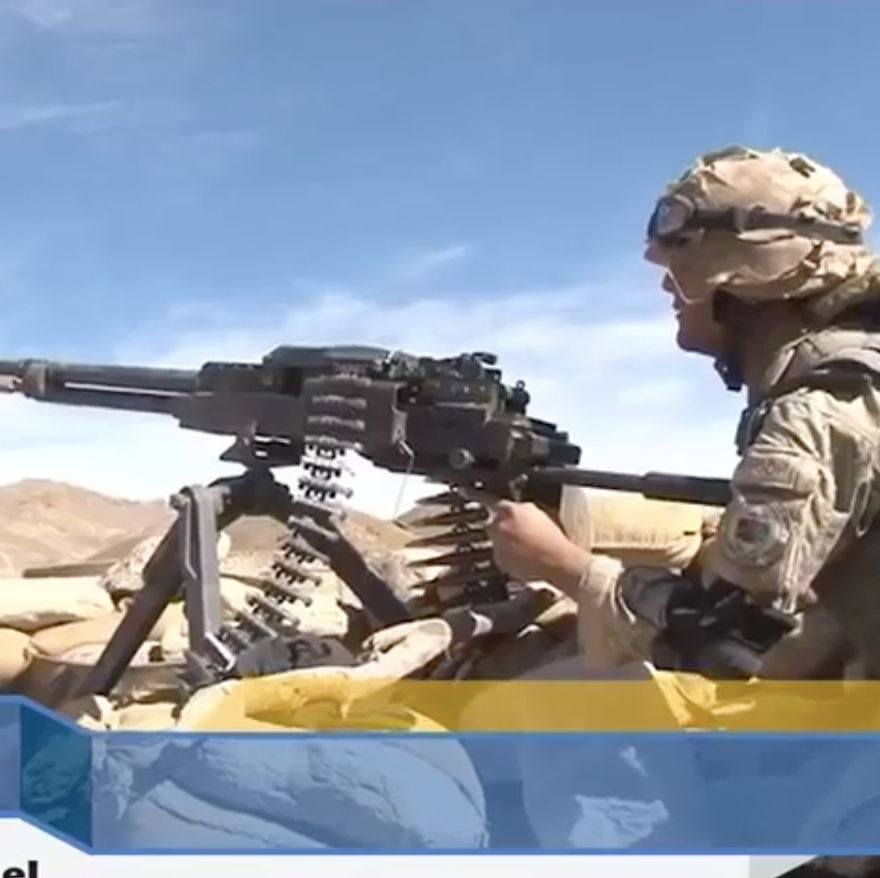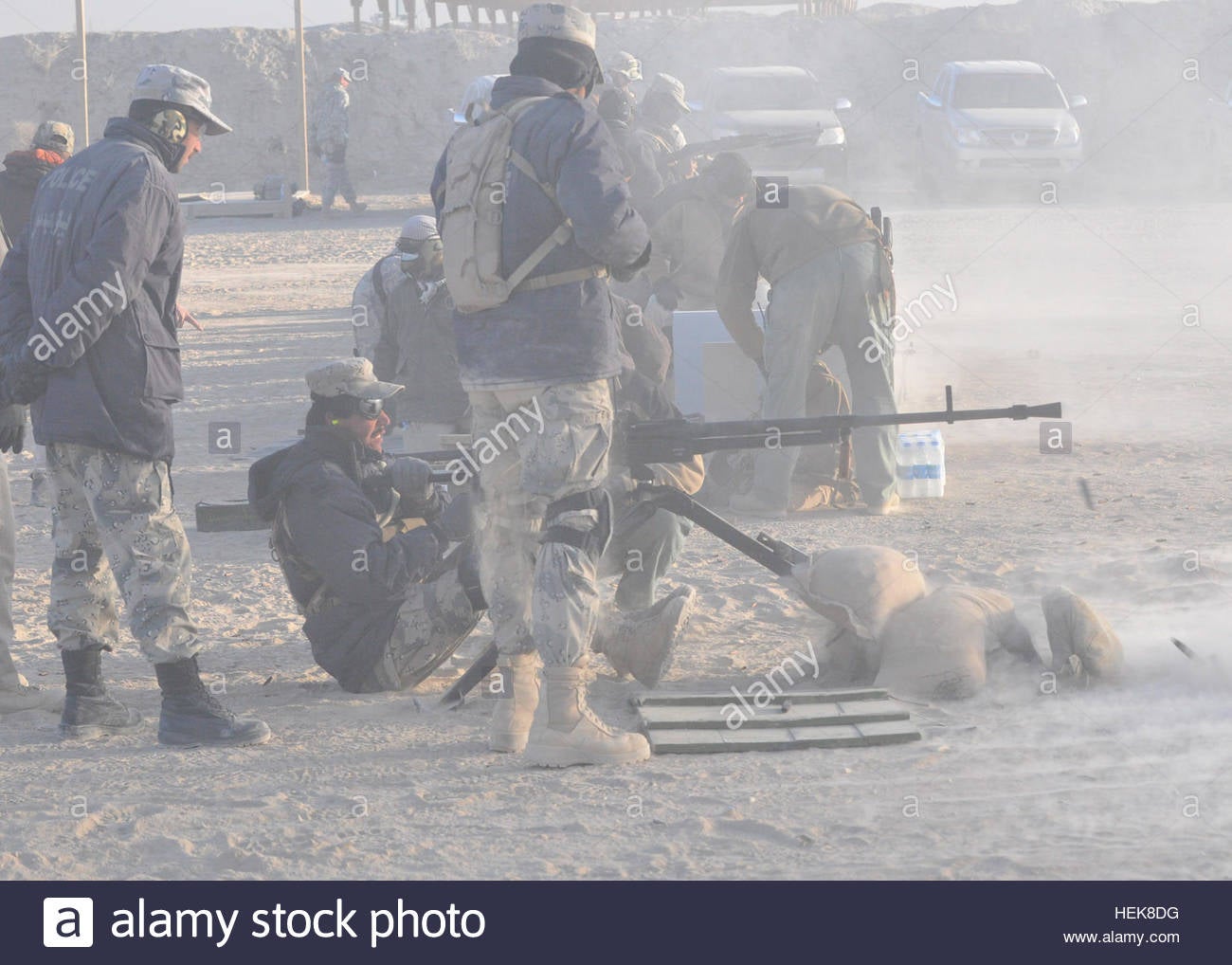Similar to many small arms in use by Afghan National Security Forces (ANSF), the diversity of Soviet patterned Heavy Machine Guns is quite high among the ANSF forces of today. Almost to a point where every derivative and variant produced in other countries is represented within the ANSF ranks from the Afghan Uniformed Police (AUP), Afghan National Army (ANA), the Nationa Directorate for Security (NDS), and the Afghan Border Police (ABP).
DShK
The most common platform in service is by far the old and reliable belt-fed, 12.7x108mm DShK HMG. Thousands are left over from the Soviet occupation as it was certainly issued to the fledgling Afghan Army at the time. However, there were numerous copies made of the DShK by different Warsaw Pact and non-Warsaw Pact countries. Albania, Pakistan, Iran, Romania, Yugoslavia, and Czechoslovakia all produced variants of the 1938 patterned design during the Cold War. Unfortunately apart from a few features here and there, identifying them for their origin from afar is very difficult unless one was able to actually see the markings.
Interestingly, this photo of Jamiat-e-Islami (Hekmatyar led) is an example of the Mujahideen DShK use during the war against the Soviets. HMGs were at a premium because of the Hind helicopter threat.
Although the DShK was popular in a ground mount utilizing a tripod during the Mujahideen years, this was mostly because of the style of fighting in the hills and the group not being able to use many vehicles. Today however, ANSF forces almost exclusively use the DShK in the vehicle-mounted role. Whether that be on M1123 HMMWVs, Ford Rangers pickup trucks, or stationary at guard posts (while mounted on top of a vehicle turret).
NSV and Kord Variants
Similar to the DShK origin identification predicament, there are two design patterns of the 12.7x108mm HMG that replaced the DShK in active Soviet service. The first is the NSV which was made in Kyrgyzstan. When the Soviet Union fell, a new design had to be configured because the Kyrgyz were no longer apart of Russia, and thus the Kord was born. A redesign was completed, this being the Kord, but for the casual observer, the two machine guns look very similar from a far distance. ARES has an excellent article written on the exact differences.
However when it comes to spotting country derivatives, fortunately many have left identifying characteristics. Most prevalent appears to be the former Yugoslavian/Serbian Zastava M02 Coyote that is actually available in .50 BMG along with 12.7x108mm. What sets this design apart from the rest is the black polymer stock with the gripping handle theat is also available on the companies M93 bolt action, anti-materiel rifle.
Interestingly, many of the Zastava M02 HMGs are in use by the uniformed division of the Afghan intelligence service, or the National Directorate of Security (NDS) as is evidenced by numerous other Zastava small arms in use by the service such as the M70 series of Kalashnikov derivatives and M84 7.62x54R PKM clones.
This photograph was shared on a Facebook page called Kabul Security Now and depicts NDS officers wrapping up failed suicide bombers.
NDS officers manning an M02 while in the back of a modified Ford Ranger. Note the RPG-7 mounted to the rear of the pickup with loaded anti-armor PG-7 rocket.
NDS Forces in position after a suicide bombing attack. Notice the same camouflage pattern on the Ford Ranger as is on the uniforms as the officers.
The next derivative in service is actually from the Belarusian state-owned arms company BSVT, a locally produced version of the NSV called the UTES. This is instantly recognizable by the very odd, tubular stock/folding shoulder brace. In addition, it has a wooden Kalashnikov patterned pistol grip.
These don’t number too much in the majority in Afghanistan and appear to be used as substitute standard for other designs due to their age. For the most part, it appears that the AUP are the sole users of the Belarussian derivative.
These photographs are of a Romanian advisor working with an AUP officer with the UTES. Notice the unique
This image is from the website of the Afghan Ministry of Interior Affairs and shows an Afghan Border Policeman at his post with a UTES.
This stock photograph from Alamy appears to show an ABP officer shooting a UTES during training–
Chinese W-85
Last we have the Chinese W-85 which is really a locally made version of the DShK but it has enough identifying characteristics that we can differentiate between the two. The biggest being the design of the gas tube, front sight post and the compensator. The W-85 wasn’t actually adopted by the Chinese PLA in any large numbers but was instead mainly exported to foriegn customers.
These appear to be extremely rare in the country and are only mounted on armored personnel carriers such as this one stationed at a traffice circle for security.
 Your Privacy Choices
Your Privacy Choices
